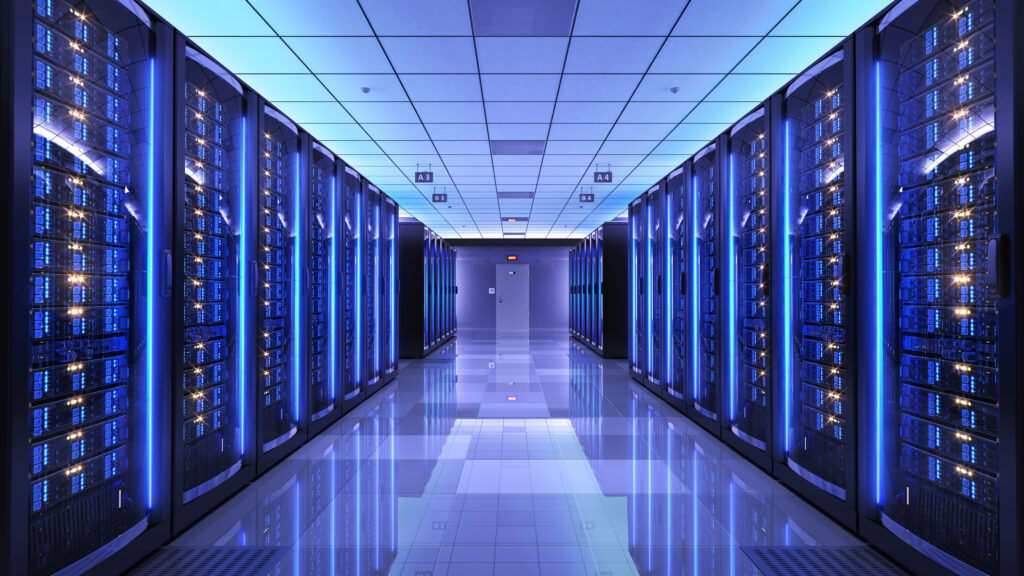




In an era where digital transformation is no longer optional but imperative, data centers have emerged as the backbone of our interconnected world. These technological fortresses house the critical infrastructure that powers everything from our social media interactions to complex enterprise operations. As an AI consulting firm specializing in master data management, we at UnKommon Revolution witness firsthand how the evolution of data centers is reshaping business landscapes and technological capabilities.
The explosive growth of data centers can be attributed to several converging factors. Cloud computing adoption has skyrocketed, with organizations increasingly migrating their operations to the cloud. The Internet of Things (IoT) continues to expand, generating unprecedented volumes of data. Additionally, the surge in artificial intelligence and machine learning applications demands more computing power than ever before.
According to industry reports, the global data center market is expected to reach $519.34 billion by 2025, marking a significant increase from previous years. This growth reflects not just expansion in traditional markets but also the emergence of new regions as data center hubs.
Today’s data centers bear little resemblance to their predecessors. Modern facilities incorporate sophisticated designs and cutting-edge technologies that optimize performance while minimizing environmental impact. Key innovations include:
Traditional air cooling systems are being supplemented or replaced by liquid cooling solutions, which offer superior efficiency for high-density computing environments. Some facilities now use immersion cooling, where servers are submerged in dielectric fluid, achieving remarkable improvements in energy efficiency.
Robotics and AI-driven systems are increasingly handling routine maintenance tasks, reducing human error and operating costs while improving reliability. These smart systems can predict and prevent failures before they occur, ensuring maximum uptime.
Environmental consciousness has become a cornerstone of data center design. Facilities are incorporating renewable energy sources, waste heat recovery systems, and innovative building materials to reduce their carbon footprint.
The rise of edge computing has introduced a new dimension to the data center landscape. While hyperscale facilities continue to grow, we’re simultaneously witnessing the proliferation of edge data centers. These smaller, distributed facilities bring computing power closer to end-users, reducing latency and enabling real-time applications.
This hybrid approach to data center architecture is particularly relevant for:
As data centers evolve, the importance of effective master data management (MDM) becomes increasingly critical. At UnKommon Revolution, we’ve observed that organizations often struggle to maintain data consistency and quality across their expanding digital infrastructure. Modern data centers must handle:
Implementing robust governance frameworks ensures data accuracy, compliance, and security across multiple systems and locations. This becomes especially challenging when managing hybrid environments combining on-premises, cloud, and edge deployments.
The ability to seamlessly integrate data from various sources while maintaining its integrity is crucial. This includes managing real-time data streams, batch processing, and cross-platform synchronization.
Maintaining data quality at scale requires sophisticated validation mechanisms and automated quality checks. This ensures that business decisions are based on accurate, current information.
The centralization of critical data and computing resources makes data centers prime targets for cyber threats. Modern facilities employ multiple layers of security:
Advanced access control systems, biometric authentication, and 24/7 surveillance protect against unauthorized physical access. Some facilities even use AI-powered security systems to detect unusual patterns or potential threats.
Sophisticated firewalls, encryption protocols, and intrusion detection systems guard against cyber attacks. Zero-trust architecture principles are increasingly being adopted to enhance security in distributed environments.
Data centers must adhere to various regulatory requirements, including GDPR, HIPAA, and industry-specific standards. This requires continuous monitoring and documentation of security measures and data handling practices.
The environmental footprint of data centers has become a crucial consideration. The industry is responding with innovative solutions:
Modern data centers employ advanced power management systems and high-efficiency equipment to reduce energy consumption. Some facilities achieve Power Usage Effectiveness (PUE) ratings approaching 1.1, significantly better than the industry average.
Many data centers now operate entirely on renewable energy or have concrete plans to achieve this goal. Solar, wind, and hydroelectric power are being integrated into data center power systems.
Innovative cooling technologies and water management systems help reduce water consumption, a critical consideration in regions facing water scarcity.
Looking ahead, several emerging trends will shape the future of data centers:
As quantum computing technology matures, data centers will need to adapt their infrastructure to support these new systems while maintaining traditional computing capabilities.
Artificial intelligence will play an increasingly important role in managing data center operations, from power management to predictive maintenance.
New cooling technologies, more efficient power systems, and innovative building materials will continue to improve environmental performance.
The rise of data centers represents more than just the growth of digital infrastructure – it symbolizes the evolution of how we process, store, and utilize information. At UnKommon Revolution, we understand that successful navigation of this landscape requires a deep understanding of both traditional data center operations and emerging technologies.
As we move forward, the integration of advanced technologies, sustainable practices, and efficient data management will become increasingly critical. Organizations that embrace these changes while maintaining robust master data management practices will be best positioned to leverage the full potential of modern data center capabilities.
The future of data centers is not just about bigger facilities or more powerful computers – it’s about smarter, more efficient, and more sustainable ways to manage our digital world. As technology continues to evolve, so too will the role and capabilities of data centers, making them even more central to our digital future.